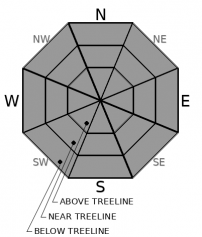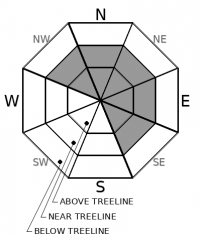| Friday | Friday Night | Saturday | |
|---|---|---|---|
| Weather: | Partly cloudy to mostly sunny. Snow levels below 7000 feet. Chance of precipitation is 5%. | Partly cloudy then becoming clear. Snow levels below 7000 feet. Chance of precipitation is 5%. | Sunny. Snow levels below 7000 feet. Chance of precipitation is 0%. |
| Temperatures: | 36 to 42 deg. F. | 16 to 21 deg. F. | 38 to 43 deg. F. |
| Mid Slope Winds: | Light winds. | Light winds. | East 5 to 10 mph. |
| Expected snowfall: | No accumulation. | SWE = none. | No accumulation. | SWE = none. | No accumulation. | SWE = none. |
| Friday | Friday Night | Saturday | |
|---|---|---|---|
| Weather: | Partly cloudy to mostly sunny. Snow levels below 7000 feet. Chance of precipitation is 5%. | Partly cloudy then becoming clear. Snow levels below 7000 feet. Chance of precipitation is 5%. | Sunny. Snow levels below 7000 feet. Chance of precipitation is 0%. |
| Temperatures: | 29 to 37 deg. F. | 14 to 19 deg. F. | 33 to 39 deg. F. |
| Ridge Top Winds: | West 5 to 10 mph. | West around 10 mph shifting to the east after midnight. | East around 10 mph. |
| Expected snowfall: | No accumulation. | SWE = none. | No accumulation. | SWE = none. | No accumulation. | SWE = none. |


























